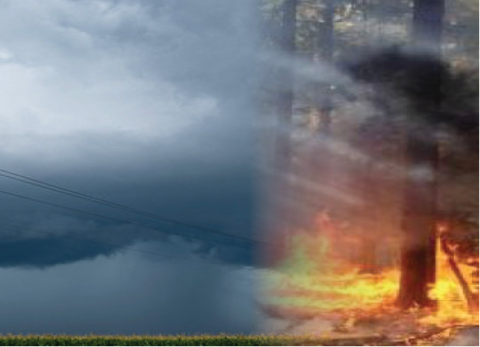The USDA Agriculture, Forestry, and Climate Science Working Group and USDA’s Office of Energy and Environmental Policy have launched a year-long monthly webinar series that aims to equip USDA employees and key Cooperative Extension personnel with the scientific foundations of climate change as they apply to USDA’s mission and daily work. The series features leading scientists from within and outside USDA, who provide the latest scientific information and respond to questions about climate change and the application of science to decision-making on working lands. This series is designed to be of use to USDA conservation, resource management, commodity, and service staff. The material is accessible to those not already familiar with climate science, but also includes information that is of use to technical experts.
View these recorded webinars to explore topics in climate science, climate change impacts, agriculture, and forestry in the Midwest and other regions of the US.
-
Climate Change 101: The Foundational Science
Dr. Keith Dixon (NOAA) speaks to USDA on the scientific foundations of climate change. Dr. Dixon is an award-winning speaker who will make this complex topic accessible to everyone at USDA, regardless of background.
-
Climate Effects on U.S. Agriculture and Forests
Climate change effects are already evident in U.S. forests and agroecosystems. We are on the cusp of additional and potentially more severe effects, primarily facilitated by increased frequency and magnitude of extreme weather events (drought, heavy rainfall, heat waves) and associated disturbances (wildfires, insect outbreaks).
-
Climate Extremes in Agriculture and Forests
Climate extremes are brought about by increased frequency, longevity, and magnitude of weather events (drought, heavy rainfall, heat waves, hurricanes) and associated disturbances (wildfires, insect outbreaks). These extremes can negatively affect agricultural production, threaten producers’ livelihoods, and disrupt food supply chains.
-
Climate Effects and Adaptation in Croplands
Croplands across the country are influenced in a diversity of ways by changes in climate. This seminar highlights some of those influences, and addresses adaptive options for the challenges posed by a changing climate.
-
Climate Effects and Adaptation in Animal Agriculture
Animal production in the U.S. and around the world is a key industry for not only food production but also land management and recycling of waste from other industries. Animal production is influenced in many ways by changes in climate, from temperature and precipitation impacts on land and animal productivity, to increased animal pest and disease pressures, to wildfire impacts on pasture and rangeland. Both impacts and adaptation strategies for climate change vary regionally and with animal system.
-
Climate Effects and Adaptation in Forests
Climate change, including increases in temperature and changes in the amount and distribution of precipitation, is affecting forests and the goods and services they provide both directly and indirectly through disturbances such as wildfires and insect and disease outbreaks. Impacts and associated adaptation strategies vary regionally and locally. In this seminar, we discuss observed and projected effects of climate change on forests, and management activities that increase the resilience of forests to climate change.
-
Climate Justice and Indigenous Traditional Ecological Knowledge
In this seminar, Drs. Wilson and Lake will define and demonstrate the links between climate change, environmental justice, traditional ecological knowledge and agriculture and forestry.
-
Greenhouse Gases in Agriculture and Forestry
Agriculture and forestry can be both sources (emitters of greenhouse gases) or they can be sinks (retainers of greenhouse gases in organic forms). In this webinar we discuss the specific types and quantities of GHG emissions from agriculture and forestry and their relative “trapping” effect.
-
Technical Mitigation Options in Croplands and Animal Agriculture
Crop and animal agricultural systems in the US are currently a net source (emitter) of GHGs. However, there are a range of opportunities for reducing or mitigating GHG emissions through management. The options differ across systems and geography, as well as level of impact and current ease of use.
-
Technical Mitigation Options in Forests
The science behind reducing greenhouse gas emissions from forests and enhancing carbon storage will be discussed in this seminar.
-
Food Systems, Food Security, and Global Linkages
U.S. agriculture is intimately linked to the rest of the world. This seminar will detail climate’s influences on food systems, food security, and global trade.
-

Climate, Agriculture, and Forests: A Complex Socio-Ecological-Economic System
Coming soon!

